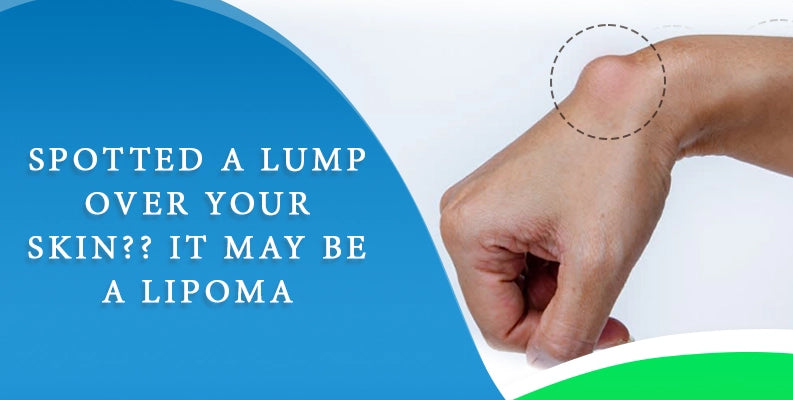
Lipoma Removal- What You Need to Know About Fatty Lumps
A lipoma is a benign tumor that affects one in every 1000 people and occurs between the skin and muscle layer. Fatty lumps, commonly Lipoma, are the most common form of soft tissue tumor that gets formed under the skin. It follows a slow growth and goes on unnoticed for months & years by a person.
Those who have a family history are at higher risks of getting Lipoma. Moreover, one can also have more than one Lipoma in their life. The fatty lumps removals are an optional choice due to their benign and slow growth.
Lipoma Explained
To those who are new to this term, Lipoma is described as a soft, rubbery, and painless fatty lump under the skin that can be moved with slight finger pressure. It is more commonly found in the middle age of people and is generally harmless.
Where you can commonly find the fatty lumps is at the upper back, armpits, upper thighs, shoulders, and arms.
Type of Lipoma
Lipoma can be categorized into the following types based on appearance:
- Traditional Lipoma is the most common type described as white fat mass
- Hibernoma is a rare type of Lipoma described as a non-cancerous brown fatty mass
- Fibrolipoma is a gentle Lipoma with a large number of fat tissues
- Angiolipoma is a singular Lipoma form that causes pain and related to blood vessels
- Myelolipoma is a subtle condition that is associated with fat tissue & cells liable for blood cell formation
- Spindle cell Lipoma are inoffensive and non-cancerous fat cells tumor
- Pleomorphic Lipoma contain fat cells with different shape & size
- Atypical Lipoma are benign tumors that are formed from the deeper fat cells
What Causes Fatty Lumps to Occur?
The exact cause of Lipoma is not known to any health provider, but it is believed that a person having a family history of Lipoma is more prone to the condition.
There are also genetic conditions that tend to develop Lipoma which includes the following;
- Gardner syndrome causes non-cancerous tumors in the colon
- Cowden syndrome, non-cancerous tumors that increase the risk of certain cancers
- Adiposis dolorosa, a condition that causes due to growth of multiple non-cancerous tumors
- Madelung’s disease that is mostly found in alcoholic men
- Familial multiple Lipomatosis, condition due to multiple Lipoma
How Lipoma Gets Identified?
In rare cases, Lipoma causes pain and generally has noticeable features. It causes pain in cases when Lipoma causes pressure on the nerves. This is when Lipoma removal becomes important for a patient.
The structure of Lipoma is defined as:
- Soft & doughy to be touched
- Can be moved with a slight finger pressure
- Has a slow growth
Risk Factors
You will be at high risks of getting Lipoma in case you are associated with the following conditions:
- A Lipoma is associated with obesity factors as it is usually made of fat. More is the amount of fat in the body, high is the chance of developing Lipoma
- Any physical trauma or injury increases the risks of developing fatty lumps into the body
- Also, there are some medical conditions such as diabetes or liver diseases that have a great impact on Lipoma development
What if Lipoma Removal is not done?
What if Lipoma left untreated? Is it risky? Maybe!
The fatty lumps can lead to severe complications if not get treated. Have a look at the problems involved!
- Infection of wounds
- Seroma
- Hematoma
- Nerve Injury to the patient
- Hemorrhage
- Keloid
Diagnosis & Treatment
Lipoma gets diagnosed based on family history reviews, medical signs & symptoms of the patient. A physical examination is performed to analyze the overall health based on the symptoms & intensity, medication history, and surgical history. There are diagnostic tests such as biopsy, X-rays, CT scan, and MRI which evaluate for the best treatment for Lipoma a patient needs to consider.
Lipoma Treatment
The treatment for Lipoma will be suggested on the basis of size, number of skin tumors, history of skin cancers, and family history of skin cancer if any. Surgery is the most common treatment approach for fatty lump removals from the body. Liposuction and steroid injections are some other options for Lipoma removal that can be considered.